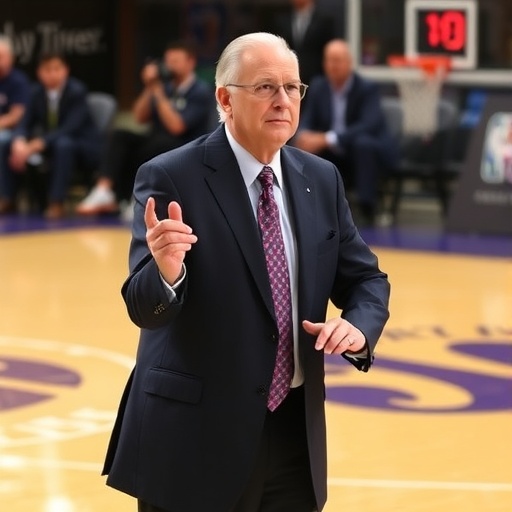Adam Silver Pledges Major Salary Increases for WNBA Players in Critical CBA Negotiations
In a game-changing announcement that’s sending shockwaves through the basketball world, NBA Commissioner Adam Silver has vowed “big” raises for WNBA players as collective bargaining talks heat up ahead of the current CBA‘s expiration on October 31. This promise comes at a pivotal moment for the league, which has seen explosive growth in viewership and revenue but has long lagged behind the NBA in player salaries and benefits.
Silver’s commitment, delivered during a recent press conference, underscores the NBA’s deep investment in elevating the women’s game. “We’re committed to ensuring that WNBA players are compensated in a manner that reflects the league’s rising star power and economic success,” Silver stated, emphasizing the need for a more equitable revenue-sharing model. This revelation has ignited hope among athletes and fans alike, potentially reshaping the financial landscape for female basketball stars.
Silver’s Vision for Elevating WNBA Economics
Adam Silver’s pledge isn’t just rhetoric—it’s a strategic pivot for the NBA, which owns and operates the WNBA. With the league’s popularity surging—evidenced by a 21% increase in viewership for the 2023 season and sold-out arenas for stars like Caitlin Clark and Angel Reese—Silver sees an opportunity to align player salaries more closely with the NBA’s model. Currently, the average WNBA salary hovers around $120,000, a stark contrast to the NBA’s multimillion-dollar contracts.
During his address, Silver highlighted the symbiotic relationship between the two leagues. “The WNBA’s success fuels the NBA’s brand, and vice versa,” he explained. “Investing in WNBA player salaries through the new CBA is essential for sustained growth.” This approach could include expanding media rights deals, which are projected to double from $60 million annually to over $120 million by 2025, according to league insiders.
To illustrate the urgency, consider the disparity: While NBA rookies can earn up to $10 million in their first year, top WNBA draft picks start at about $76,000. Silver’s “big” raises could mean salary caps rising by 50% or more, introducing supermax deals and performance incentives that reward longevity and achievements like All-Star selections.
Unpacking the Expiring CBA’s Shortcomings
The current CBA, ratified in 2020, was a step forward but fell short of addressing core inequities in the WNBA. It introduced a 50% revenue-sharing threshold—meaning players receive a portion of league income once it surpasses a certain level—but this has rarely been triggered due to conservative revenue projections. As a result, player salaries have remained stagnant, with many athletes relying on off-season jobs or overseas play to make ends meet.
Statistics paint a grim picture: In 2023, only 20% of WNBA players earned over $100,000, per data from the Women’s National Basketball Players Association (WNBPA). Veterans like Diana Taurasi, a three-time Olympic gold medalist, earn around $235,000 annually—admirable, but insufficient given the physical demands and global stardom. The CBA‘s expiration on October 31 marks the end of a seven-year deal that prioritized expansion over immediate pay hikes, leading to eight new teams since 2019 but without proportional financial gains.
Silver acknowledged these gaps, noting, “The existing agreement served us well during unprecedented times like the pandemic, but it’s time for evolution.” Negotiations, already underway informally, will focus on pension plans, maternity leave enhancements, and marketing funds to boost individual player endorsements, which currently pale in comparison to NBA counterparts.
WNBA Stars Rally for Ambitious Demands in Talks
As collective bargaining ramps up, WNBA players are united in their push for transformative changes. Led by WNBPA executive director Terri Jackson, the union is demanding a full 50% revenue share—mirroring the NBA’s model—and the elimination of salary floors that keep minimum pay artificially low at $64,000 for rookies.
High-profile voices are amplifying the call. A’ja Wilson, the 2024 WNBA MVP, tweeted, “We’ve built this league with our sweat and stories—now it’s time for the economics to catch up.” Similarly, Sue Bird, a retired legend and advocate, has publicly urged Silver to prioritize equity, stating in a recent podcast, “Adam Silver has the power to make history here. Big raises aren’t a luxury; they’re justice.”
The demands extend beyond base player salaries. Players seek improved travel accommodations, mental health resources, and equity in charter flights—a perk NBA players have enjoyed since 2016. With the league’s valuation estimated at $1 billion and sponsorships from brands like Nike and State Farm pouring in, the WNBPA argues that the financial pie is large enough to share more generously.
Union representatives have prepared detailed proposals, including tiered salary structures based on years of service and a fund for player-led community initiatives. If met, these could increase average earnings by 30-40% within the first year of the new CBA, per preliminary analyses from sports economists.
Broader Implications for Women’s Sports Landscape
The outcome of these CBA negotiations could ripple far beyond the WNBA, setting precedents for women’s professional leagues in soccer, tennis, and beyond. Silver’s involvement signals the NBA’s role as a trailblazer, especially after the NWSL’s recent labor deal that boosted soccer player pay by 40%.
Economically, higher player salaries might accelerate talent acquisition, drawing more international stars and reducing the exodus to Europe. For fans, this means deeper rosters and more competitive matchups, potentially pushing attendance—already up 48% in 2023— even higher. Marketing experts predict that empowered players will enhance the league’s narrative, turning athletes into global icons akin to LeBron James or Stephen Curry.
Challenges remain, however. The NBA’s ownership group must balance WNBA investments with its own fiscal responsibilities, amid reports of a $200 million annual subsidy. Yet, Silver remains optimistic: “This is an investment in the future of basketball.” Stakeholders, including ESPN and Amazon as potential broadcast partners, are watching closely, as a robust CBA could unlock billions in new media revenue.
Timeline and Milestones Shaping the New Era
With the clock ticking toward October 31, the collective bargaining process is poised for intensity. Formal talks are slated to begin in early 2025, but preliminary meetings between Adam Silver, WNBPA leaders, and league executives have already outlined key priorities. A lockout remains a remote possibility, but players are prepared to leverage their growing leverage—bolstered by social media campaigns and fan support—to avoid disruptions.
Looking ahead, the new CBA could be ratified by mid-2025, aligning with the WNBA’s expansion to 16 teams by 2028. Milestones include interim agreements on salary adjustments for the 2025 season and the introduction of a revenue audit to ensure transparency in sharing models. Silver has hinted at innovative elements, such as equity stakes for long-term players and bonuses tied to digital engagement metrics.
For WNBA athletes, the stakes are personal and professional. Emerging talents like Sabrina Ionescu envision a league where player salaries reflect their cultural impact, while veterans push for retirement security. As negotiations unfold, the basketball community holds its breath, anticipating a deal that not only promises “big” raises but cements the WNBA’s place as a powerhouse in sports entertainment. The path forward is bright, with potential to inspire generations of female athletes worldwide.
This evolving story will see updates as talks progress, but one thing is clear: Adam Silver’s promise marks a turning point for women’s basketball.










